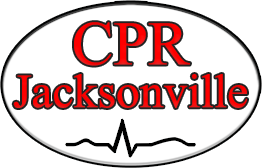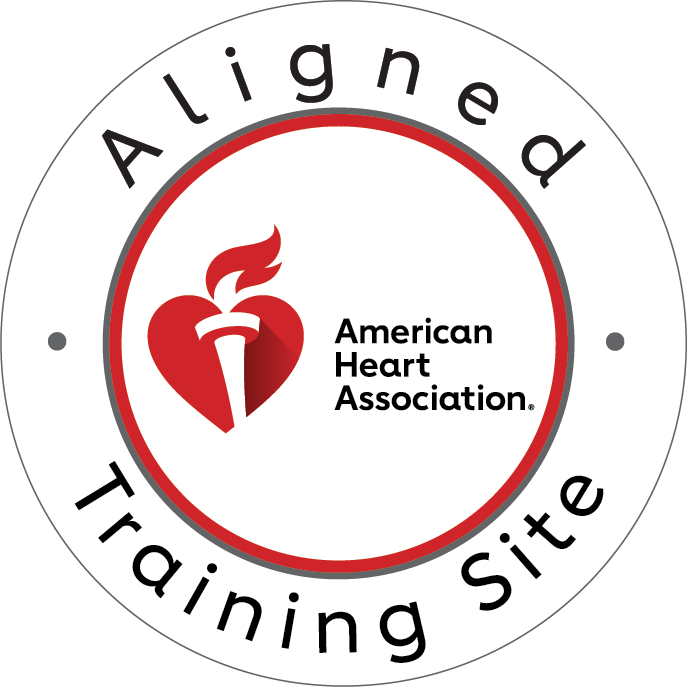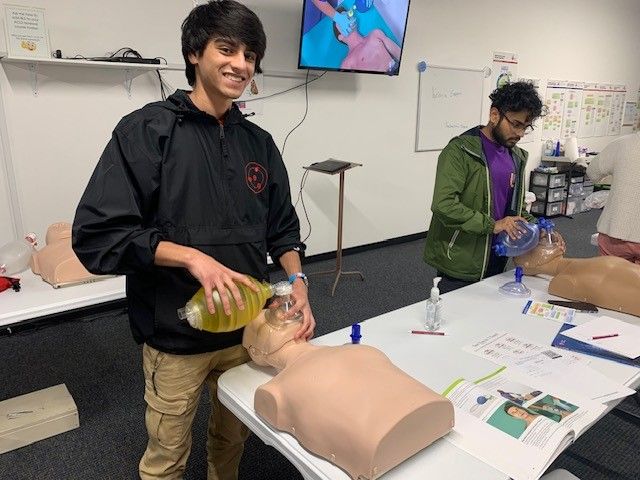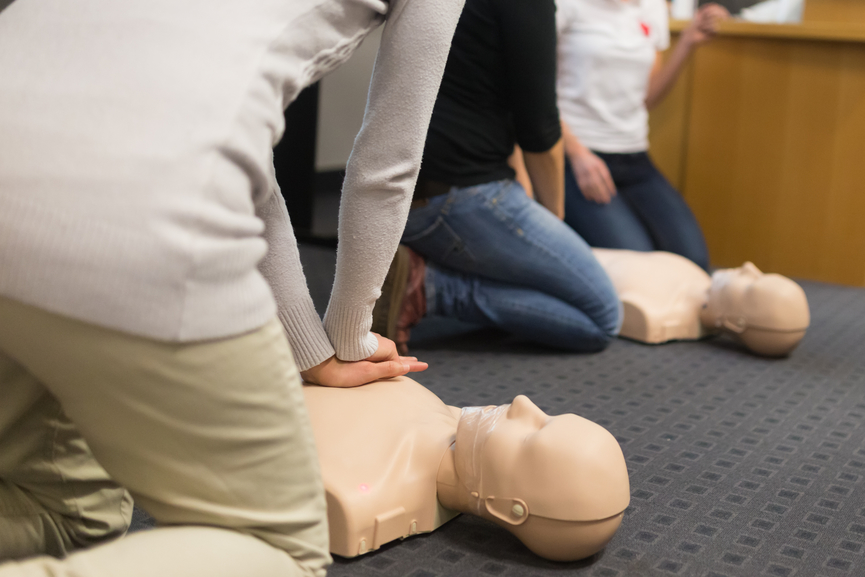Every day, countless lives are saved by ordinary people who possess an extraordinary skill: CPR, or Cardiopulmonary Resuscitation. In the critical moments following a cardiac emergency, the swift application of CPR can mean the difference between life and death. Picture this: a sudden collapse, a panicked bystander, and a heart that has stopped beating. In these harrowing moments, the knowledge of CPR transforms ordinary individuals into heroes, capable of restoring life and hope.
But why is CPR so crucial, particularly in those first few minutes? To understand its significance, we must delve into the intricate workings of the human body and the remarkable power of early intervention.
Understanding CPR
CPR, or Cardiopulmonary Resuscitation, is a vital emergency procedure designed to maintain blood circulation and oxygen flow when a person’s heart has stopped beating or is not effectively pumping blood. This intervention involves a combination of chest compressions and rescue breaths, administered to keep oxygenated blood flowing to the vital organs until further medical assistance arrives.
The process of CPR is relatively straightforward, yet its impact can be profound. By compressing the chest, CPR helps mimic the heart’s pumping action, thereby circulating oxygen-rich blood throughout the body. Additionally, rescue breaths deliver essential oxygen to the lungs, replenishing the body’s oxygen supply and sustaining life.
However, what sets CPR apart as a life-saving measure is not just its mechanical actions but also the critical timing of its administration. In cardiac emergencies, every second counts, and the window of opportunity for successful resuscitation is narrow. This is where the concept of early CPR becomes paramount.
When a person experiences sudden cardiac arrest, their chances of survival diminish rapidly with each passing minute. Without immediate intervention, irreversible brain damage and death can occur within a matter of minutes. Therefore, the importance of early CPR cannot be overstated.
Research has consistently shown that early initiation of CPR can significantly improve the likelihood of survival. Studies have demonstrated that CPR administered within the first few minutes of cardiac arrest can double or even triple survival rates. This dramatic increase in survival underscores the critical role that early intervention plays in the chain of survival.
So, why is early CPR so effective? The answer lies in its ability to buy precious time. By immediately initiating CPR, bystanders can maintain vital blood flow to the brain and other organs, preventing irreversible damage and increasing the likelihood of a positive outcome. In essence, early CPR serves as a bridge between the moment of crisis and the arrival of advanced medical care, offering a lifeline to those in distress.
The Critical Importance of Early CPR
In the realm of cardiac emergencies, time is perhaps the most precious commodity. The human body can only survive for a short period without a steady supply of oxygenated blood, and every passing moment without intervention increases the risk of irreversible damage. This is where the critical importance of early CPR comes into play.
Imagine yourself in a situation where someone suddenly collapses in front of you, their breathing erratic, and their pulse weak or absent. In these high-stakes moments, your swift response could make all the difference. By initiating CPR immediately, you become a crucial link in the chain of survival, offering the best chance for the victim’s recovery.
The significance of early CPR lies in its ability to buy time until more advanced medical help arrives. When the heart stops beating or fails to pump effectively, the body’s oxygen supply rapidly dwindles, leading to a cascade of detrimental effects. Brain cells begin to die within minutes, and irreversible damage can occur within a mere five to seven minutes without oxygen.
However, by starting CPR promptly, you can help maintain blood circulation and oxygen delivery to the brain and other vital organs. This temporary life support sustains the body until professional medical assistance, such as defibrillation or advanced cardiac care, becomes available. In essence, early CPR serves as a critical bridge between the onset of cardiac arrest and the arrival of definitive medical treatment.
The importance of early CPR is underscored by its profound impact on survival rates. Studies have consistently shown that immediate initiation of CPR significantly improves the chances of survival in cardiac arrest cases. Survival rates can double or even triple when CPR is administered within the first few minutes of collapse.
Moreover, early CPR not only increases the likelihood of survival but also enhances the quality of life for survivors. By minimizing the duration of oxygen deprivation and preventing organ damage, early intervention can lead to better neurological outcomes and long-term recovery.
In communities where CPR training is widespread and early intervention is encouraged, the impact on survival can be even more significant. Empowering individuals with the knowledge and skills to perform CPR equips communities to respond effectively to cardiac emergencies, turning bystanders into potential lifesavers.
How Early CPR Works
To comprehend the significance of early CPR, it’s crucial to understand how this life-saving technique works on a physiological level. When a person experiences cardiac arrest, their heart either stops beating altogether or fails to pump blood effectively. This disrupts the flow of oxygen-rich blood to the brain and other vital organs, setting off a chain reaction of cellular damage and organ failure.
CPR intervenes in this process by artificially circulating blood throughout the body, thereby providing oxygen to the organs and tissues until normal heart function can be restored. The two primary components of CPR—chest compressions and rescue breaths—work together to sustain vital functions and buy precious time for the victim.
Chest compressions are the cornerstone of CPR, as they help stimulate the heart’s pumping action. By applying rhythmic pressure to the chest, compressions help generate blood flow and maintain circulation. The goal is to compress the chest by at least two inches in adults and at a rate of 100 to 120 compressions per minute, as recommended by the American Heart Association.
Rescue breaths complement chest compressions by replenishing the body’s oxygen supply. These breaths involve delivering air into the victim’s lungs through mouth-to-mouth or mouth-to-mask ventilation. By providing oxygen-rich air, rescue breaths ensure that vital organs receive the oxygen they need to function properly.
Together, chest compressions and rescue breaths create a continuous cycle of oxygen delivery and circulation, sustaining life until advanced medical care can be administered. In essence, CPR serves as a temporary solution to bridge the gap between the onset of cardiac arrest and the arrival of definitive treatment.
The effectiveness of CPR hinges on the prompt initiation of chest compressions and rescue breaths. Every minute without CPR decreases the chances of survival by 7% to 10%, making early intervention critical in maximizing outcomes. By starting CPR immediately, bystanders can optimize the victim’s chances of survival and minimize the risk of long-term complications.
The Role of CPR Training
While the concept of CPR may seem straightforward, effective execution in real-life scenarios requires knowledge, skill, and confidence. This is where CPR training plays a pivotal role. By equipping individuals with the necessary knowledge and skills, CPR training empowers them to respond effectively to cardiac emergencies and potentially save lives.
CPR training covers a range of essential topics, including recognizing the signs of cardiac arrest, performing chest compressions and rescue breaths, and using an automated external defibrillator (AED). Hands-on practice sessions allow participants to gain confidence in their ability to perform CPR correctly and effectively.
One of the key benefits of CPR training is that it prepares individuals to act decisively in emergency situations. Instead of feeling overwhelmed or uncertain, trained individuals are equipped with the skills and confidence to intervene promptly and effectively. This can make a significant difference in the outcome of a cardiac emergency, where every second counts.
Moreover, CPR training fosters a culture of preparedness within communities. By encouraging widespread CPR training, communities can increase the likelihood of bystander intervention in cardiac emergencies, thereby improving overall survival rates. Research has shown that communities with higher rates of CPR training tend to have higher rates of survival from cardiac arrest.
CPR Jacksonville FL serves as an exemplary training site for individuals seeking CPR certification and renewal. With a focus on hands-on, stress-free training, CPR Jacksonville FL ensures that participants gain the skills and confidence needed to respond effectively in real-life situations. Whether it’s basic life support (BLS) for healthcare providers, advanced cardiac life support (ACLS), or pediatric advanced life support (PALS), CPR Jacksonville FL offers comprehensive courses tailored to the needs of healthcare professionals and lay rescuers alike.
By investing in CPR training, individuals not only enhance their preparedness but also contribute to the overall resilience of their communities. As we continue to explore the importance of early CPR, we’ll delve deeper into the role of CPR training in empowering individuals and saving lives. Join us as we uncover the transformative power of knowledge and skill in the realm of cardiac emergency response.
Empowering Communities through CPR Education
Beyond individual training, the widespread dissemination of CPR education is essential for building resilient communities capable of responding effectively to cardiac emergencies. Empowering members of the community with the knowledge and skills to perform CPR increases the likelihood of bystander intervention and improves overall survival rates.
One of the key benefits of community-wide CPR education is its potential to create a network of trained responders. In communities where CPR education is widespread, there is a greater likelihood of encountering individuals who are trained and ready to act in the event of a cardiac emergency. This network of responders serves as a safety net, increasing the chances that someone nearby will be able to provide life-saving assistance when needed.
Moreover, CPR education helps dispel myths and misconceptions surrounding cardiac emergencies, empowering individuals to take action with confidence. By raising awareness about the signs of cardiac arrest and the importance of early intervention, CPR education demystifies the process of CPR and encourages bystanders to step forward and assist when they encounter someone in need.
CPR education also extends beyond traditional classroom settings, reaching into schools, workplaces, and community organizations. By integrating CPR training into school curricula and workplace wellness programs, communities can ensure that individuals of all ages and backgrounds have access to life-saving skills. This proactive approach not only prepares individuals to respond to emergencies but also instills a sense of responsibility and preparedness from a young age.
Furthermore, community-wide CPR education fosters a culture of collective responsibility and solidarity. By coming together to learn and practice CPR, communities demonstrate their commitment to supporting one another in times of need. This sense of unity strengthens social bonds and reinforces the idea that everyone has a role to play in preserving life and promoting well-being.
As CPR education continues to spread across communities, the impact on survival rates from cardiac arrest is expected to grow exponentially. By equipping individuals with the knowledge and skills to perform CPR, communities can transform bystanders into lifesavers and create a safer, more resilient society for all.
Conclusion
In the face of a cardiac emergency, every second counts. The swift application of CPR can mean the difference between life and death, offering a lifeline to those in distress. Throughout this journey, we’ve explored the critical importance of early CPR and its profound impact on survival rates and community well-being.
From understanding the physiological mechanisms at play to recognizing the pivotal role of CPR training and community-wide education, we’ve uncovered the transformative power of early intervention. By initiating CPR promptly and effectively, bystanders become not just witnesses to tragedy but active participants in the chain of survival.
As we reflect on the importance of early CPR, let us remember that each one of us has the potential to make a difference. Whether through individual training, community-wide education, or advocacy for CPR awareness, we all have a role to play in saving lives and building resilient communities.
For those in Jacksonville FL, CPR certification is readily available at CPR Jacksonville FL. Their American Heart Association training site offers comprehensive courses tailored to the needs of healthcare professionals and lay rescuers alike. By becoming CPR certified, you not only equip yourself with life-saving skills but also contribute to the safety and well-being of your community.
In the end, the true measure of our humanity lies not in our ability to stand by in the face of adversity but in our willingness to extend a helping hand when it’s needed most. So let us stand together, united in our commitment to preserving life and spreading hope through the power of early CPR.



